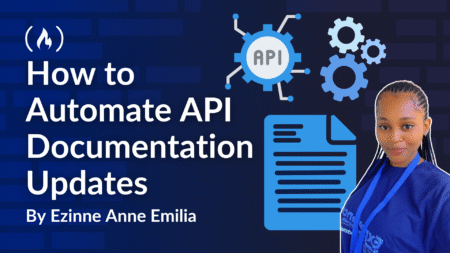Abstract
This article explores how artificial intelligence can transform technical evaluation processes in talent acquisition, particularly in the software development field. Through the Dessert & Learn session, two complementary approaches are presented: a basic one using prompts in Copilot for automated code analysis, and a more advanced one using intelligent agents built with n8n and the RAG (Retrieval-Augmented Generation) pattern. These tools demonstrate how bias can be reduced, evaluation accuracy improved, and hiring processes scaled. Additionally, the fundamentals of RAG and n8n are explained, highlighting their potential to build contextualized automation workflows that are replicable across multiple industries.
Introduction
In a world where tech talent is increasingly scarce and competitive, traditional hiring processes face major challenges: subjective evaluations, lack of scalability, unconscious biases, and difficulties in identifying the true technical potential of candidates.
In this context, Artificial Intelligence (AI) emerges as a powerful ally. In this Dessert & Learn session, we explore how to build intelligent evaluator agents using tools like Copilot, n8n, and the RAG (Retrieval-Augmented Generation) pattern to transform the way we assess technical talent.
The Challenge of Traditional Hiring
In traditional hiring processes—particularly in the software development field—companies face multiple challenges:
- Subjective evaluations, often based more on intuition than on objective technical criteria.
- Lack of scalability, as manually reviewing dozens or hundreds of resumes consumes significant time and resources.
- Difficulty identifying true technical potential, due to poorly structured interviews or misaligned assessments.
- Unconscious biases, which can undermine fairness in candidate selection.
These challenges not only slow down the hiring process but also increase the risk of poor decisions, negatively impacting productivity, organizational culture, and talent retention. In this context, artificial intelligence emerges as a powerful tool to transform and optimize the recruitment workflow.
From Prompts to Agents: The Automation Journey
Automation begins with something as simple as a prompt in Copilot, but it evolves into autonomous agents capable of reasoning, retrieving contextual information, and making decisions. This journey involves integrating tools like OpenAI, Pinecone, and orchestration platforms such as n8n, enabling the creation of intelligent workflows that analyze, classify, and generate automated reports.
Basic Agent with Copilot
The first step was to design a specific prompt in Copilot to analyze technical development tests. This basic agent evaluates the source code submitted by a candidate, identifying best practices, common mistakes, and compliance with technical criteria. It’s an agile solution for obtaining an initial automated assessment.
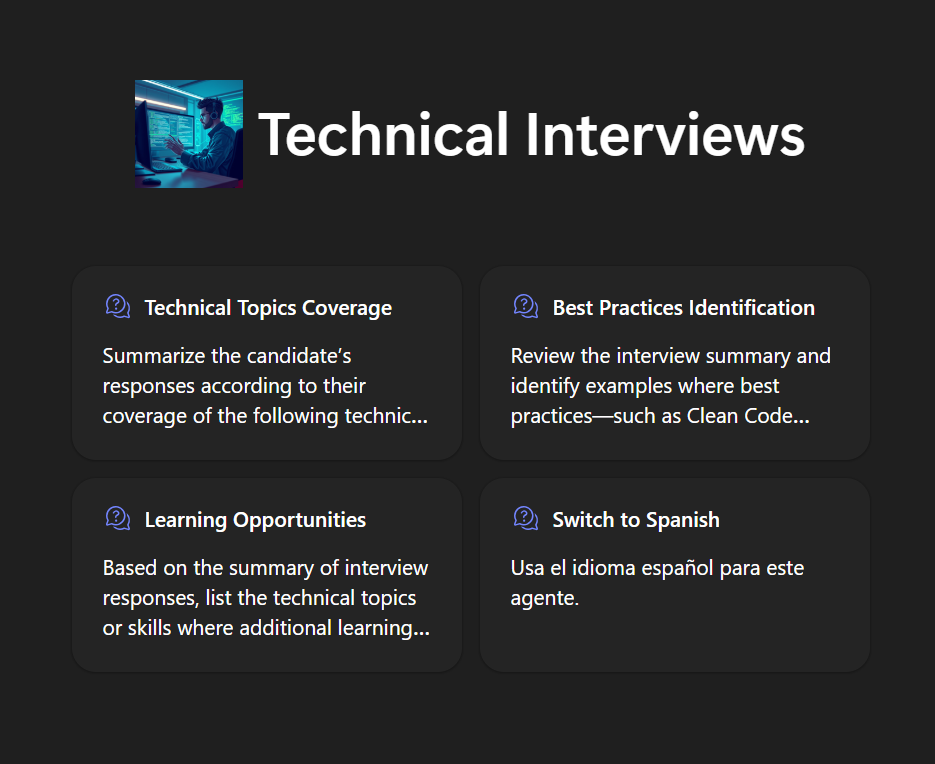
Figure 1. Technical Interviews Agent
This agent is designed to assist in the technical evaluation of candidates applying for .NET developer positions. Its main role is to analyze the responses given during technical interviews and generate a detailed report based on widely accepted principles such as Clean Code, Object-Oriented Programming (OOP), SOLID principles, Entity Framework, software architecture, REST services, software testing (unit, integration, TDD), and experience with both relational and NoSQL databases. Through this analysis, the agent identifies technical strengths, applied best practices, and highlighted areas of knowledge, as well as potential improvement opportunities or topics the candidate should reinforce. This process provides a clear and structured view of the interviewee’s technical readiness, facilitating well-informed decision-making during the selection process. The ultimate goal is to ensure that the candidate meets the organization’s expected technical standards.
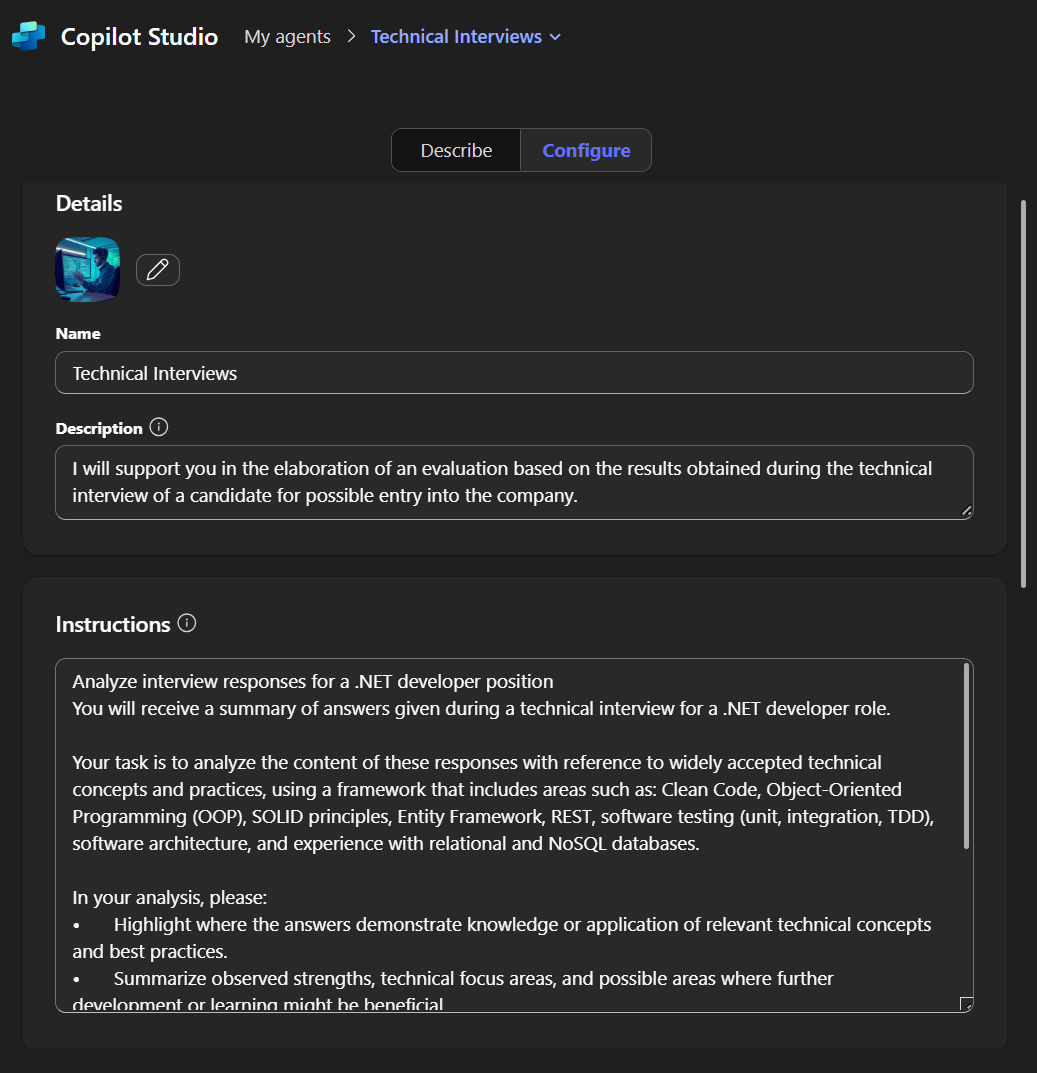
Figure 2. Configuration the Agent on Copilot
Agent with n8n and RAG
In this demonstration, I will showcase an advanced evaluator agent built using n8n and the Retrieval-Augmented Generation (RAG) pattern. This agent goes beyond simple prompts by integrating multiple tools and services to perform intelligent evaluations of software developer profiles.
The agent uses n8n as the orchestration platform, combining OpenAI for language processing, Pinecone for vector-based retrieval of previously indexed CVs or technical documents, and custom logic for decision-making. The workflow includes:
- Semantic understanding of input (e.g., technical skills, project history)
- Contextual search across a vector store to enrich the analysis
- Rule-based scoring and classification (Junior, Mid, Senior)
- Generation of structured, automated technical reports
This example illustrates how to build scalable and intelligent automation flows capable of interpreting, reasoning, and deciding in real-world hiring processes.
First Flow on n8n
This automated workflow in n8n is designed to process candidate folders based on their technical profile (FullStack React.js, Angular, BackEnd with C#, or Java), stored in Dropbox. Upon execution, the workflow lists all available folders, splits them individually, and routes each one using a Switch Folders node according to the detected stack. It then lists and downloads the corresponding files from each folder, which may include resumes, interview notes, or technical responses. These documents are sent to the Candidates Vectorization module, which uses Azure OpenAI to generate semantic embeddings. The resulting vectors are further processed by a Default Data Loader and text segmentation tools (Token Splitter), optimizing the format for future queries or analysis. This flow enables structured and enriched processing of candidate data, facilitating intelligent searches and contextual evaluations, ultimately supporting more efficient and accurate technical hiring decisions.

Figure 3. CV’s Flow vectorization
Second Flow on 8n8 – Candidate Assistant
This flow represents an intelligent agent designed to answer technical questions about candidates categorized by technology stack: FullStack React.js, FullStack Angular, BackEnd with C#, and BackEnd with Java. The process begins with an incoming HTTP request via a webhook. The request fields are then edited and sent to the central AI Agent node, which combines simple memory (for session context) with an Azure OpenAI chat model.
The agent evaluates which specific tool to use based on the mentioned stack and redirects the query to one of four custom tools (one per stack). Each tool is connected to a dedicated vector store containing previously generated embeddings from resumes, interview responses, or technical assessments.
For each stack, there is a dedicated chat model that interacts directly with its respective vector store, enabling contextualized and accurate responses. This modular design allows highly specialized interaction tailored to the candidate’s profile. Finally, the generated response is returned via webhook to the original request source.
This flow enables smart querying of technical information, providing a semantic search system powered by embeddings and language models—ideal for automating the evaluation process in technical talent recruitment.
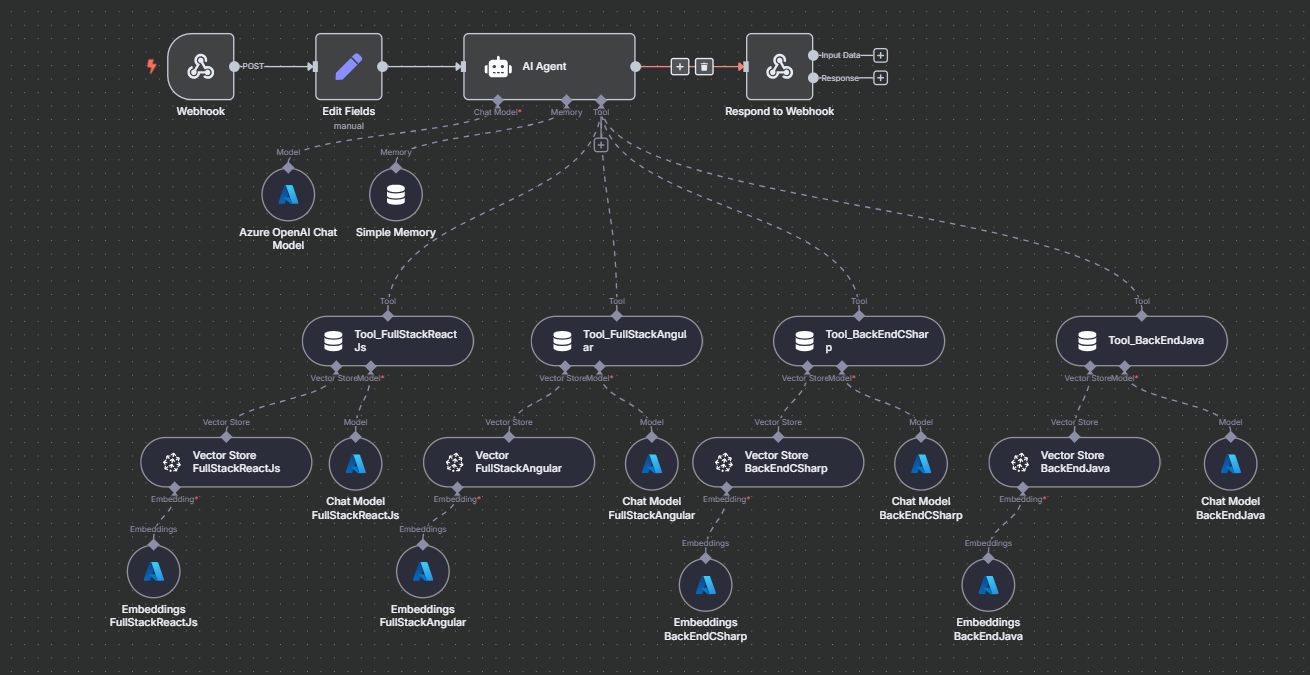
Figure 4. Intelligent Agent using RAG architecture
Interactive Web Chat with AI Agent
The image shows a web chat interface connected to an automation flow in n8n via a webhook. The purpose of this chatbot is to assist in technical recruitment processes by allowing users to request detailed information about candidates based on their technology stack or specific skills. In this case, the user inquires about profiles with C# experience, and the agent responds by listing three candidates: Camilo Herrera, Natalia Paredes, and Valentina Ríos, noting that none explicitly mention Entity Framework expertise. When asked for details about Camilo Herrera, the agent replies with a professional summary describing his growth from Junior Developer to Tech Lead, highlighting his experience in maintenance, refactoring, and technical leadership at CloudForge Ltda. (2022–2023). This solution combines natural language processing with retrieval-augmented generation (RAG), enabling contextualized responses based on previously vectorized information. The workflow streamlines the selection process by providing accurate, automated, and easily accessible candidate insights through a user-friendly interface.
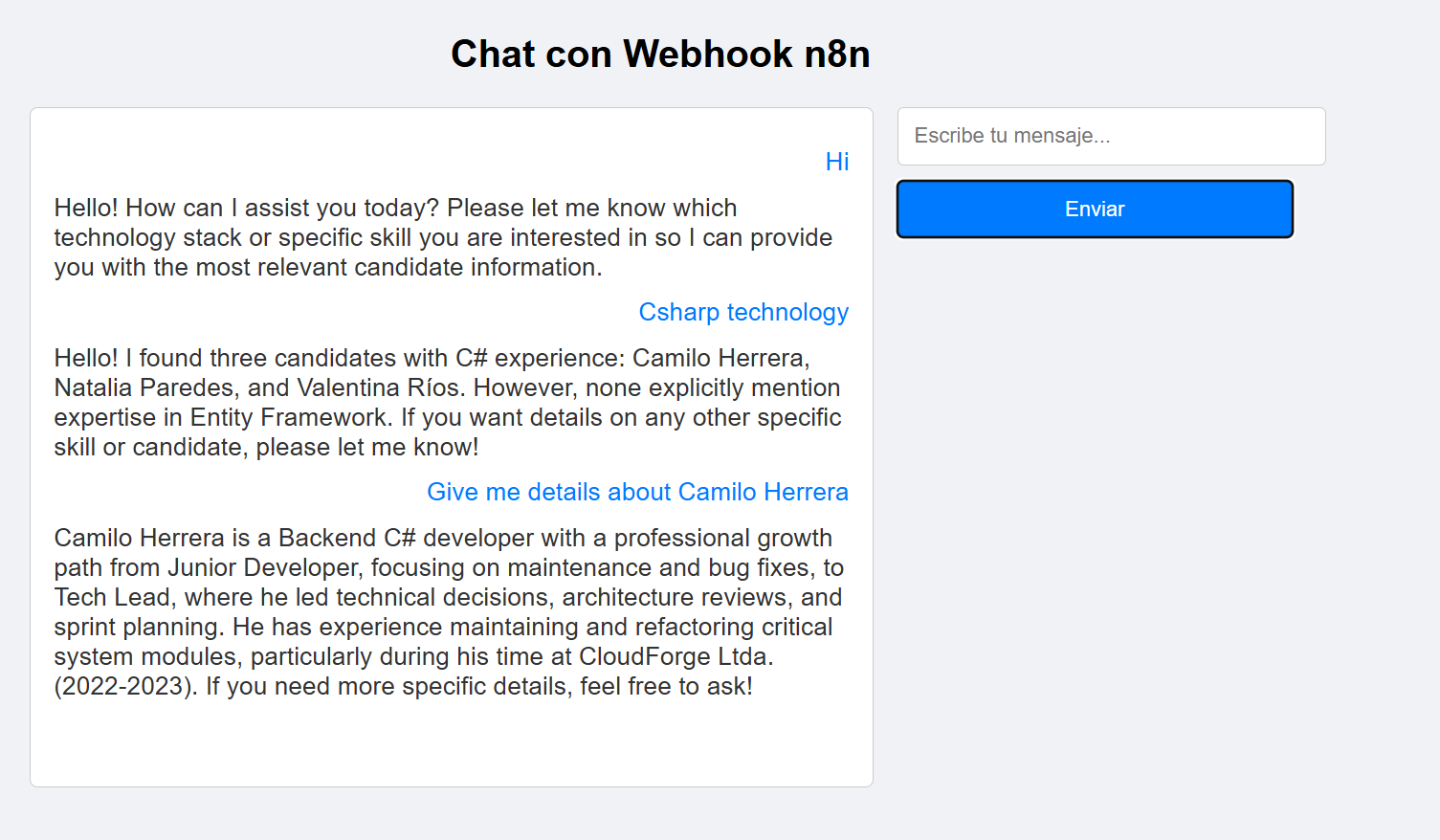
Figure 5. Web Chat Endpoint with Embedded Agent
Conclusions
AI is a powerful ally in technical talent evaluation
Intelligent agents help reduce bias, streamline processes, and improve decision-making during developer selection.
From simple prompts to advanced agents: the journey is progressive
It’s possible to start with basic automated evaluations (like those in Copilot) and gradually evolve toward more robust, scalable solutions with n8n and RAG.
n8n enables complex workflows without sacrificing technical control
By connecting tools like OpenAI, Pinecone, and custom rules, we can build contextual evaluators that generate structured reports and make autonomous decisions.
RAG enables more informed and accurate evaluations
By retrieving relevant information in real time, agents don’t just “respond”—they understand and contextualize, improving the precision of the analysis.
This approach is replicable across multiple domains
While the use case focused on talent evaluation, the same principles apply to support, education, document analysis, healthcare, and more.
Cognitive automation is no longer the future—it’s the present
Implementing intelligent agents is already viable, accessible, and a clear competitive advantage for tech, HR, and analytics teams.
Source: Read MoreÂ

